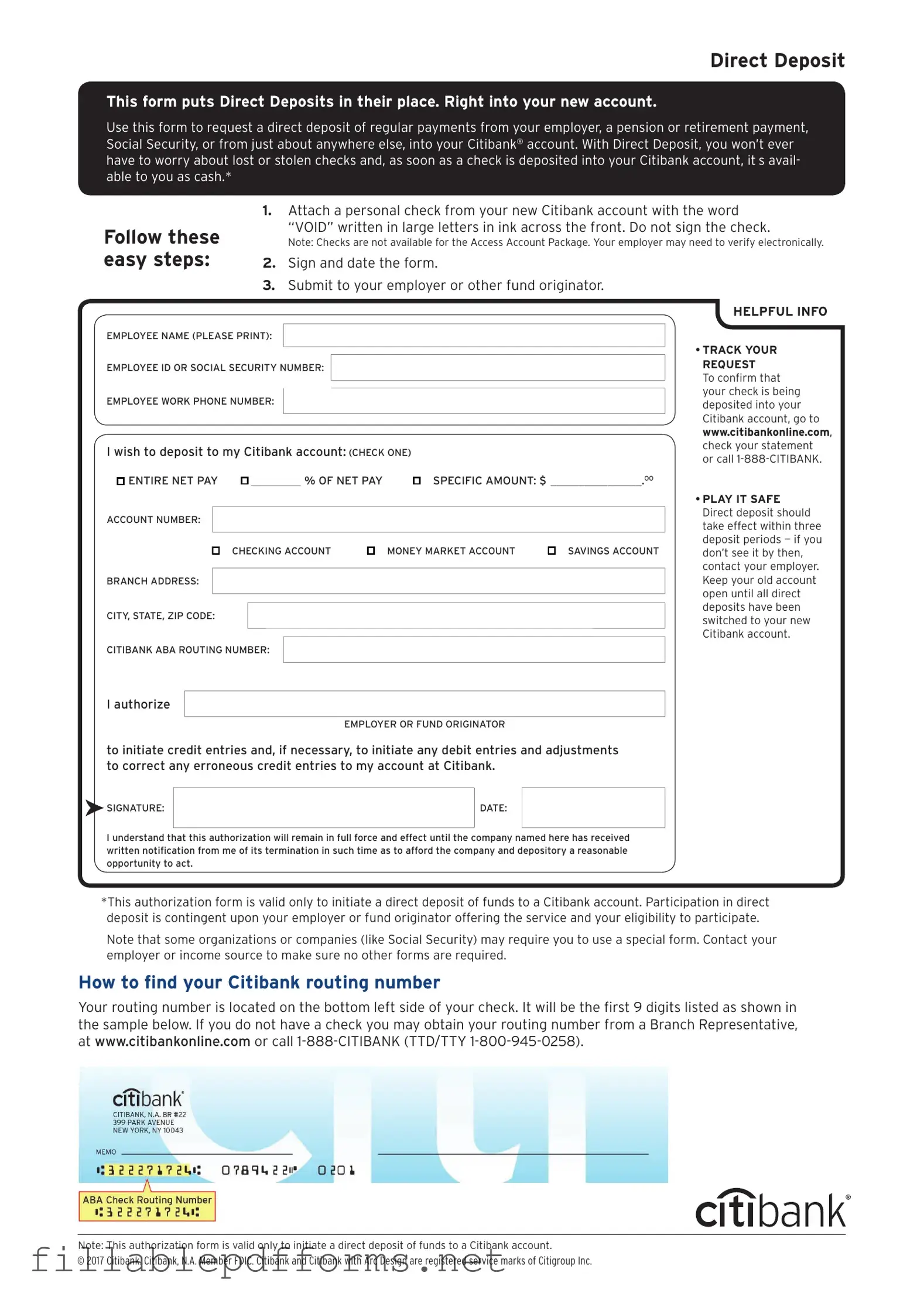The Citibank Direct Deposit form is a crucial document for individuals seeking to streamline their banking transactions. This form facilitates the automatic deposit of funds into a Citibank account, eliminating the need for physical checks. Users must provide essential information, including their account number, routing number, and personal identification details. Additionally, the form typically requires the signature of the account holder to authorize the transaction. By completing this form, individuals can ensure that their paychecks, government benefits, or other recurring payments are deposited directly into their bank account, thus enhancing convenience and security. Moreover, the process of setting up direct deposit can lead to faster access to funds and reduced risk of check-related fraud. Understanding the components and requirements of the Citibank Direct Deposit form is vital for anyone looking to take advantage of this efficient banking feature.
